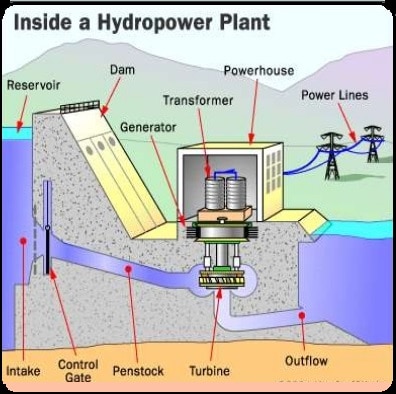Inside hydro-Power-Plant
The development of a hydro power plant begins with the identification of potential sites and the
preparation of a Pre-Feasibility Report (PFR). This initial phase focuses on assessing the project's
viability by evaluating factors such as water availability, topography, environmental impact, and
potential energy output. The findings from this assessment help determine whether it is worthwhile to
move forward with a more detailed investigation.
Once the preliminary viability is established, the project progresses to the preparation of a
Feasibility Report (Detailed Project Report or DPR). This stage involves a comprehensive analysis of the
technical, environmental, social, and financial aspects of the project. Detailed studies are conducted
to refine cost estimates, design plans, and project schedules, ensuring that the proposed hydro power
plant is both technically feasible and financially sound. This thorough assessment forms the foundation
for obtaining necessary approvals and funding.
After the feasibility phase, the focus shifts to Detailed Engineering, which involves the design and
optimization of all project components, such as turbines, generators, civil structures, and transmission
systems. During the construction phase, rigorous Supervision is provided to ensure that all work adheres
to the approved designs, quality standards, and safety protocols. This hands-on oversight is crucial for
the timely and successful completion of the project, ultimately leading to the smooth commissioning and
operation of a sustainable hydro power plant.










